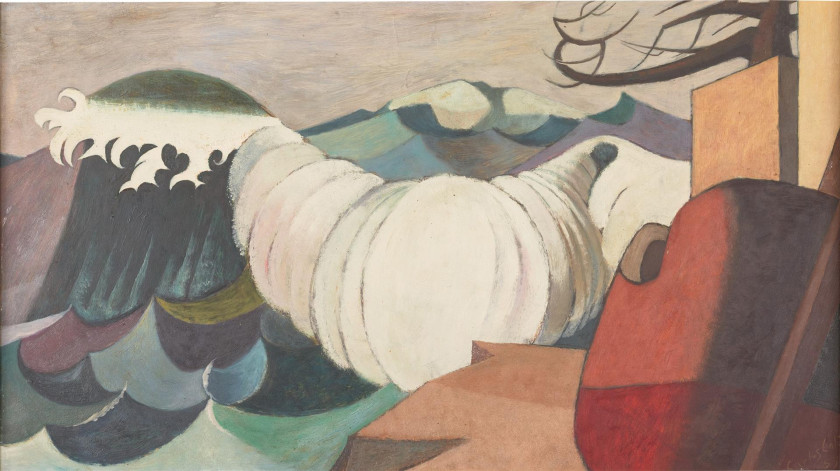Sem título [Untitled]
painting


1953
Oil on platex
- 37 x 64,5 cm50,3 x 78 cm
Architect, painter and photographer, Carlos Calvet began exhibiting in 1949 with the group The Surrealists. His initial surrealist production, identifiable until 1955, denotes his interest in synthetic cubism and the Italian metaphysical painting of Giorgio de Chirico and Carlo Carrá. In the 1960s his painting would evolve towards a dreamlike and metaphysical pop language.
Made in the initial phase of his career, this work by Calvet already seems to announce some of the premises that he will explore in the future. Apparently, the artist offers us a seascape. On a fairly uniform background, he builds successive levels of depth - some waves in the last plane resembling mountains, the breaking waves in the background, and a foreground composed of what looks like a promontory, with some abstract buildings and a tree skeleton. There is also an attraction for dramatic perspectives: the composition is framed by the earthy and red volumes in the right-hand corner of the image, and from there the eye is guided by the undulating diagonal formed by the white foam of the wave. Although he simulates volumetry by using shading, a tendency towards the simplified and uniform application of colours is already noticeable. Perhaps the influence of the compositional strategies of Japanese prints is not unrelated to this, as the cut-out of the white crest of the wave seems to suggest.
This way Calvet achieves a balance between the statism and dynamism of the composition, either through the modulation of forms, or through the harmonious contrasts of colours: the convulsion of the sea is counterbalanced by the stabilising plane of the land; the warm earthy and red tones contrast with the cold blues and whites of the sea; the gaze winds around the image following the distribution of the white, which illuminates and energises the work.
The dreamlike treatment of this imagined landscape seems to suggest the bridge between Calvet's surrealist origins and his future sceneries of a metaphysical pop.
Luísa Cardoso